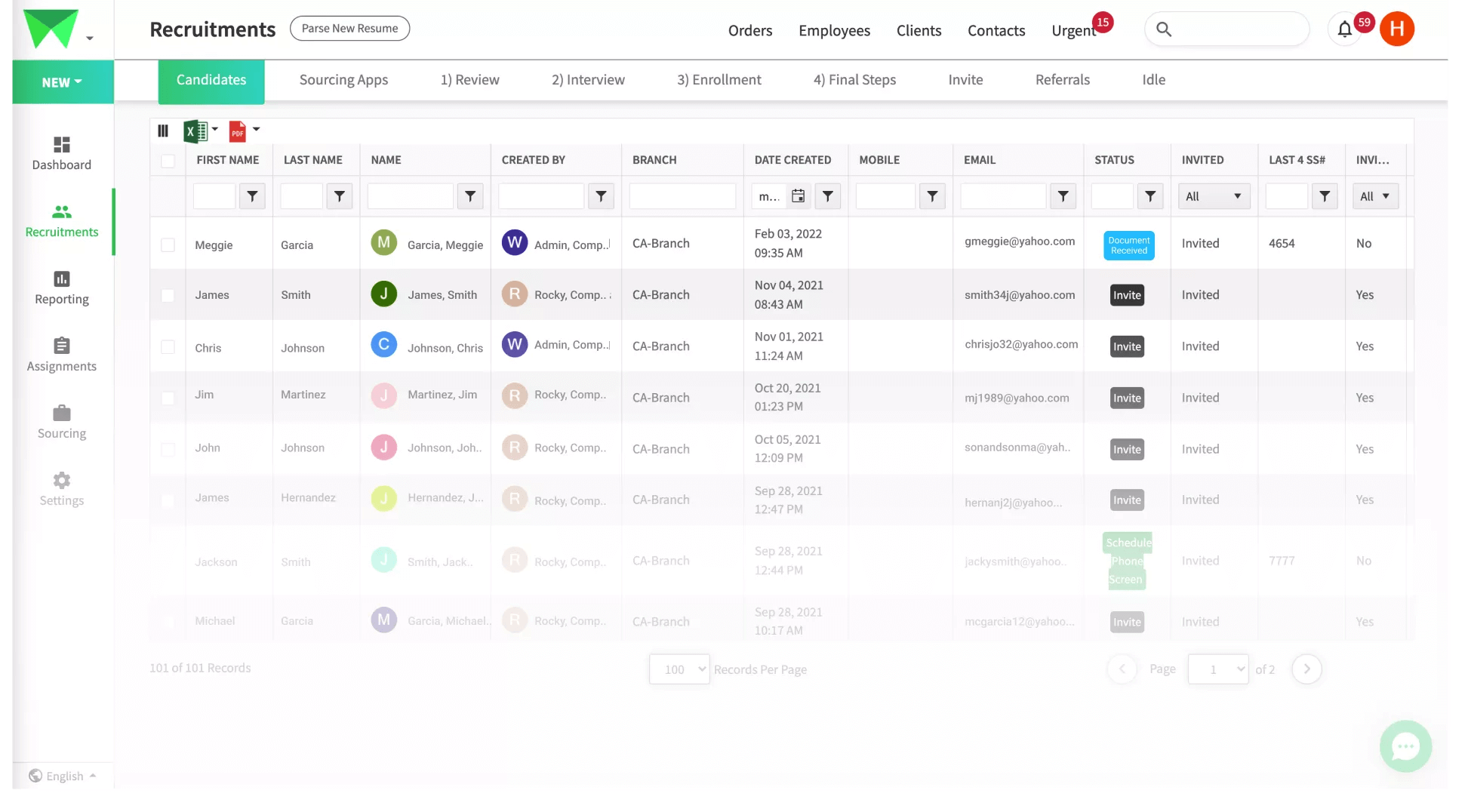Reliable Staffing Management Solutions: Software Insights
Reliable Staffing Management Solutions: Software Insights
Blog Article
Unleashing the Power of Information: Enhancing Human Resources Strategies With Cutting-Edge Staffing Administration Software Application
In the swiftly progressing landscape of personnels, the utilization of data has become a pivotal pressure in shaping organizational success. As companies make every effort to stay affordable and dexterous, the combination of innovative staffing management software program sticks out as a transformative tool in simplifying HR procedures. By taking advantage of the power of information analytics, organizations can not just boost their recruitment methods yet additionally maximize worker retention and productivity. The synergy between data-driven understandings and progressed innovation provides an engaging possibility for HR professionals to revolutionize their strategy towards ability administration.
Value of Data-Driven HR Strategies
Why have data-driven HR techniques become necessary in modern company operations? In today's busy and competitive service atmosphere, companies are increasingly depending on data-driven understandings to make educated decisions. Data-driven human resources techniques make it possible for business to maximize their labor force administration, recruitment processes, and staff member involvement campaigns. By assessing data associated with worker efficiency, turnover prices, and ability voids, HR divisions can recognize trends, anticipate future needs, and develop proactive options to address challenges.
Data-driven HR techniques also play a critical duty in improving worker satisfaction and retention. With the evaluation of worker feedback, efficiency testimonials, and training end results, human resources professionals can customize private advancement strategies, recognize high-potential workers, and cultivate a society of continuous learning and development within the company. Data-driven understandings make it possible for HR groups to align their methods with the overall business purposes, ensuring that skill management efforts directly contribute to organizational success.
Advantages of Staffing Management Software Program
Making use of staffing monitoring software streamlines the recruitment and onboarding procedures for HR departments, improving efficiency and accuracy in talent procurement. One considerable benefit of this software is the capability to streamline candidate information, making it quickly available for employment teams. By having all candidate details in one location, human resources experts can efficiently track prospect progression, connect efficiently with potential hires, and ensure a seamless recruitment experience.
Moreover, staffing management software application typically consists of features such as return to parsing and keyword phrase matching, which help in rapidly identifying leading prospects that match the job needs. This automation reduces the moment spent on hand-operated return to screening, allowing human resources team to concentrate on even more calculated tasks. staffing management software. In addition, these systems can integrate with work boards and social networks systems, broadening the reach of job postings and attracting a diverse swimming pool of candidates
Additionally, analytics and reporting tools within staffing monitoring software provide beneficial understandings right into employment metrics, such as time-to-fill and cost-per-hire. This data-driven method enables human resources groups to make informed decisions, enhance recruitment approaches, and boost total employing processes. By leveraging these benefits, companies can improve their talent procurement initiatives, enhance prospect experience, and eventually construct a strong labor force.
Enhancing Recruitment Procedures With Data
Utilizing data-driven methods in employment processes has actually ended up being progressively crucial for organizations seeking to boost their talent procurement results. By leveraging information, companies can make more informed choices throughout the recruitment lifecycle, ultimately bring about better hires and enhanced retention prices. One crucial means data enhances employment procedures is by enhancing task postings based on insights from past successful hires. Assessing metrics such as the source of top skill, time to fill positions, and candidate high quality can aid recruiters tailor task summaries to bring in the appropriate prospects successfully.
Furthermore, data analytics can simplify the testing and choice process by determining patterns in candidate qualifications and performance indicators. Overall, incorporating data into employment processes encourages companies to make smarter working with decisions and construct high-performing teams.
Improving Worker Retention Through Technology

One way innovation can improve employee retention is special info with using staff member engagement platforms. These systems enable real-time feedback, acknowledgment, and interaction in between workers and monitoring, promoting a culture of appreciation and assistance. In addition, modern technology can allow customized knowing and growth programs customized to individual worker demands and profession desires, increasing work complete satisfaction and loyalty.
Moreover, information analytics devices can aid organizations determine patterns and trends associated to employee turn over, allowing them to take proactive measures to attend to prospective concerns prior to they intensify. Overall, by leveraging innovation properly, companies can develop a much more appealing and helpful work environment that motivates workers to stay and expand within the business.
Making Best Use Of Labor Force Productivity With Data

Via why not try these out the evaluation of information, human resources divisions can identify patterns and trends that influence productivity levels. As an example, by tracking employee work hours and task conclusion prices, companies can enhance work routines to make sure that tasks are effectively distributed among staff member. In addition, Your Domain Name information can reveal ability spaces within the labor force, enabling HR to execute targeted training programs that enhance worker capabilities and total performance.
Moreover, data-driven efficiency evaluations enable supervisors to provide certain comments and support to workers, fostering a culture of continual enhancement. In general, leveraging data to make best use of labor force productivity is a tactical strategy that empowers organizations to attain their goals successfully and successfully.
Final Thought
To conclude, making use of advanced staffing monitoring software program can dramatically enhance human resources strategies by leveraging the power of data. By integrating data-driven recruitment procedures, boosting staff member retention with innovation, and maximizing labor force performance, organizations can simplify their operations, make more enlightened decisions, and ultimately accomplish higher success in managing their human resources. Embracing these technological innovations is crucial in the ever-evolving landscape of personnel monitoring.
Data-driven Human resources strategies make it possible for companies to optimize their workforce management, recruitment procedures, and worker interaction campaigns. By analyzing information related to staff member performance, turn over rates, and skill voids, HR divisions can recognize trends, predict future needs, and develop positive remedies to attend to difficulties.

Report this page